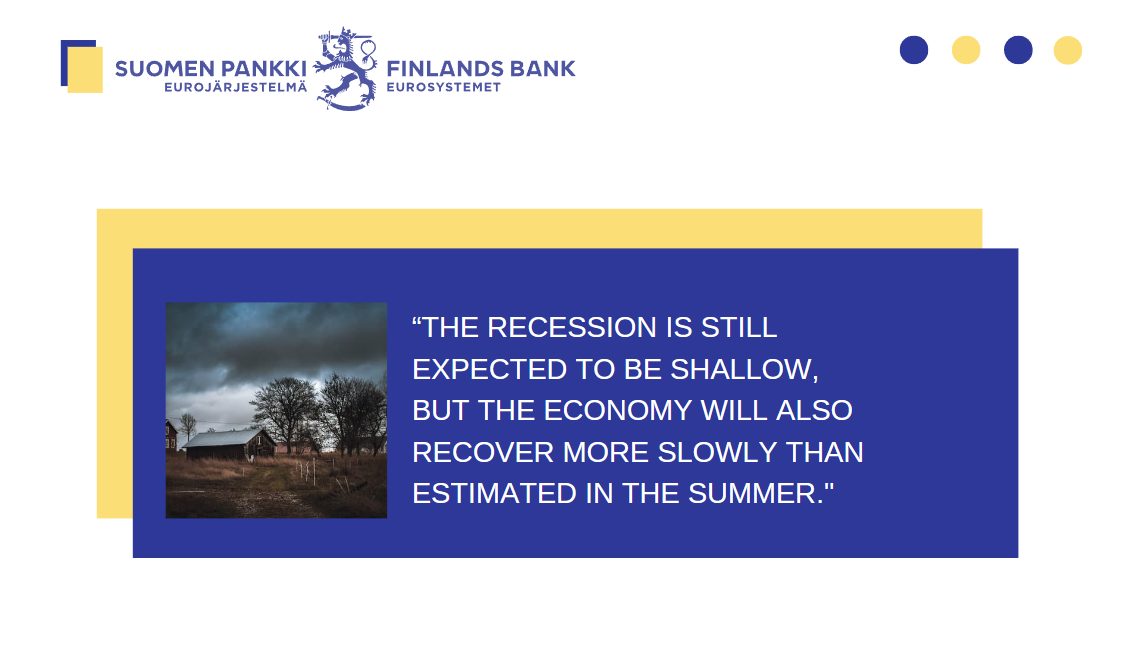Monetary policy tightening by the European Central Bank will bring inflation down to the target level
Inflation has been high in the euro area for an extended time already. This year, inflation has slowed due to the fall in energy prices and the European Central Bank's (ECB) significant tightening of monetary policy. The ECB's Governing Council has raised its policy rates by a total of 4.5 percentage points since July 2022. The principal policy rate, which is the deposit facility rate paid to banks, is currently at 4%.
When inflation is rising, this is often accompanied by rising inflation expectations on the part of consumers, businesses and the markets. Inflation expectations in the euro area have, however, stayed broadly anchored at the ECB's inflation target of 2%.“Inflation expectations are key for price trends and for monetary policy, as they affect both price setting by businesses and wage demands of employees,” says Member of the Board of the Bank of Finland Tuomas Välimäki.
The ECB has tightened monetary policy by raising its key interest rates and allowing the securities in the Asset Purchase Programme (APP) to mature at a predictable pace. The ECB's interest rate increases are transmitted to lending rates, slowing the growth in the loan stock considerably and reducing aggregate demand. The weakened performance of the global economy is also weighing on the euro area economy. Although economic growth is currently slow in the euro area, the euro area economy will avoid an actual recession according to the projections.
Euro area inflation will slow further but is still expected to remain too high for too long. The latest ECB projections show that by 2025, inflation in the euro area will have remained above the ECB's 2% medium-term target for more than four years.
“Based on our current assessment, we in the ECB Governing Council consider that the key policy rates have reached levels that, maintained for a sufficiently long duration, will make a substantial contribution to the timely return of inflation to our target,” says Välimäki. “But taking into account the risks surrounding the inflation path, this does not necessarily mean there will be no more interest rate increases. Because inflation is staying above the target for this long, any additional delay in achieving the target cannot be considered acceptable.” Future interest rate decisions will be dependent on the incoming economic and financial data. “We will assess the inflation outlook also in the light of the dynamics of underlying inflation and the strength of monetary policy transmission,” Välimäki adds.
The ECB's monetary policy is conducted for the entire euro area, with the objective of euro area price stability. This is in Finland's interests as well. Price stability in the euro area will secure balanced growth in the Finnish economy, as the euro area is an internal market and a major trading partner for Finland. The impacts of the ECB's monetary policy are transmitted differently and at varying speeds within the euro area, depending on factors such as how variable the lending rates are in the different countries.
Housing loans in Filand are mostly variable rate loans. This means that a rise in interest rates is quickly transmitted not only to new mortgages but also to the entire loan stock and thereby to the disposable incomes of mortgage borrowers. The differences among the countries of the euro area in regard to average interest rates for new mortgages and corporate loans are currently smaller thank for loan stocks.






















































First, please LoginComment After ~